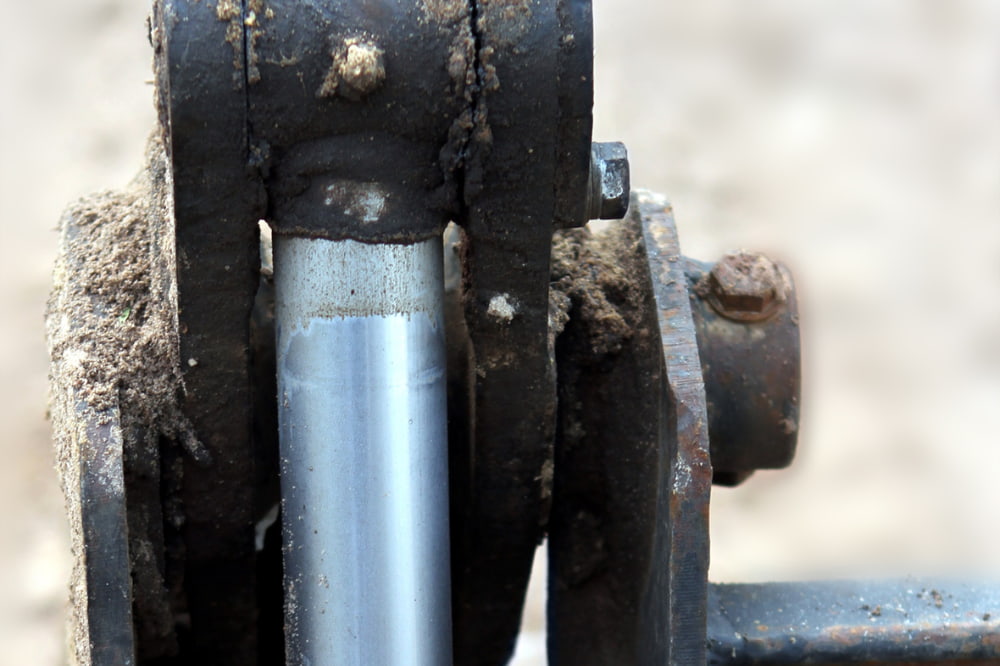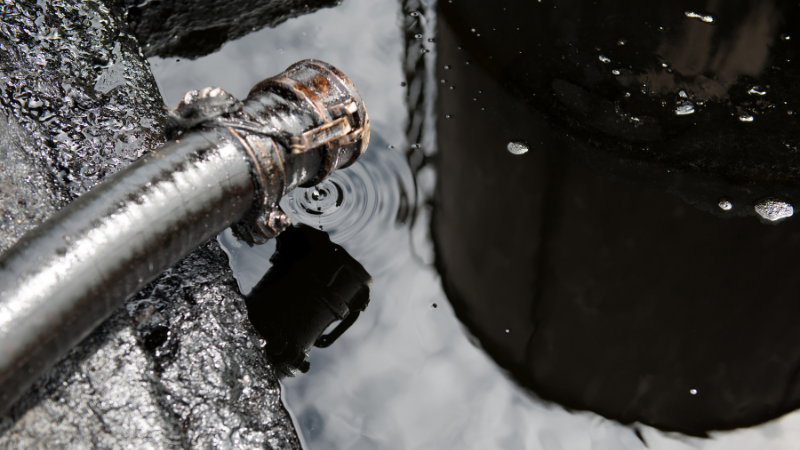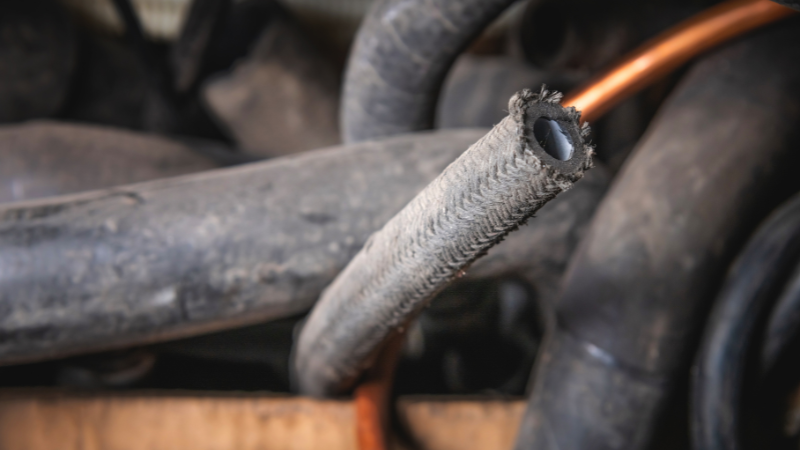How to Bleed a Hydraulic Ram
March 8, 2024

Hydraulic rams are major components in the world of engineering, used in various applications ranging from hydraulic brakes in automobiles to heavy machinery. However, like any mechanical system, hydraulic rams require regular maintenance to operate efficiently.
One crucial maintenance task is bleeding the hydraulic system. In this guide, we’ll discuss the intricacies of bleeding a hydraulic ram, ensuring optimal performance and longevity.
Understanding Hydraulic Rams
Before we dive into the bleeding process, let’s grasp the fundamentals of hydraulic rams. A hydraulic ram operates on the principle that pressure applied to a confined fluid is transmitted undiminished throughout the fluid in all directions.
In simpler terms, when force is applied to one end of a hydraulic system, it transmits that force to the other end through the fluid. Hydraulic systems comprise various components, including a reservoir, pump, valves, and actuators such as rams.
These systems use hydraulic fluid, typically oil, to transmit power. Over time, air can accumulate in the hydraulic fluid, leading to decreased efficiency and performance. Bleeding the system removes trapped air, ensuring smooth operation.
Why Bleeding is Necessary
Air trapped within the hydraulic system can cause several issues. Air bubbles compress more than hydraulic fluid, leading to sponginess in the system. This reduces the transfer of force, affecting the ram’s performance.
Air pockets can cause erratic behaviour, such as unexpected jerks or delays in hydraulic action. Air bubbles disrupt fluid flow, causing friction and heat buildup within the system, potentially damaging components.
Given these potential problems, bleeding the hydraulic ram is essential for maintaining optimal performance and safety.
Preparation
Before starting the bleeding process, it is important to gather the necessary tools and equipment:
Wrenches or spanners appropriate for your hydraulic fittings.
Clean rags or towels to wipe away any spilt hydraulic fluid.
Protective gloves and eyewear to prevent contact with hydraulic fluid.
A suitable container to collect drained fluid.
Additionally, consult the equipment manual or manufacturer’s guidelines for specific instructions on bleeding your hydraulic ram, as procedures may vary.
Step-by-Step Guide to Bleeding a Hydraulic RAM
When bleeding a hydraulic RAM, there are several steps that you need to follow to complete the process as safely as possible.
Step 1: Locate Bleeder Valves
Identify the bleeder valves on your hydraulic ram. These valves are typically small, threaded components located near the highest point of the system. If your ram has multiple cylinders, each cylinder may have its bleeder valve.
Step 2: Position Ram
Ensure the ram is in a stable position and that the reservoir is adequately filled with hydraulic fluid. It’s crucial to maintain fluid levels throughout the bleeding process to prevent introducing additional air into the system.
Step 3: Open Bleeder Valve
Using the appropriate wrench or spanner, carefully loosen the bleeder valve on the hydraulic ram. Be cautious not to overtighten or damage the valve threads. Place a container beneath the valve to catch any fluid that drains out.
Step 4: Apply Pressure
Activate the hydraulic system to apply pressure. This can be done by operating the pump or actuating the ram, depending on the setup. As pressure builds, air bubbles trapped within the system will migrate towards the open bleeder valve.
Step 5: Monitor Fluid Flow
As hydraulic fluid begins to flow from the bleeder valve, observe the fluid for any air bubbles. Continue to apply pressure until a steady stream of fluid, free of air bubbles, emerges from the valve. This indicates that the air has been purged from the system.
Step 6: Close Bleeder Valve
After confirming the absence of air bubbles and ensuring that only clean hydraulic fluid is flowing from the bleeder valve, it’s crucial to securely tighten the valve using a wrench or spanner.
Exercise caution not to over-tighten, as excessive force can potentially damage the valve or its threads, leading to leaks or operational issues. A snug, firm tightening is sufficient to seal the valve effectively without risking damage.
This step helps maintain the integrity of the hydraulic system and prevents the ingress of air or contaminants, ensuring optimal performance and longevity of the equipment.
Step 7: Repeat if Necessary
In instances where the hydraulic ram comprises multiple cylinders or involves a complex system, it’s vital to conduct the bleeding process for each component individually. By repeating the bleeding process for each cylinder or section of the system, you can thoroughly purge any remaining air pockets and ensure optimal hydraulic performance.
Step 8: Check System Operation
Once the hydraulic system has been bled and components checked, it’s imperative to conduct a thorough operational test to confirm its functionality. Activate the ram or pump as per the system’s specifications and carefully observe its performance.
Pay close attention to any unusual noises, vibrations, or erratic behaviour during operation. Additionally, verify that all components are functioning as expected, including valves, hoses, and connectors. Any discrepancies or abnormalities should be promptly addressed to prevent potential system failures or safety hazards during operation.
Step 9: Dispose of Fluid Properly
Additionally, it’s crucial to ensure that hydraulic fluid is stored properly to prevent leaks or spills that could contaminate soil and water sources.
Regular maintenance checks should be conducted to identify any potential leaks or issues with hydraulic systems before repairs are required, and prompt action should be taken to address them to minimise environmental impact.
Furthermore, educating personnel on the proper handling and disposal procedures for hydraulic fluid can help mitigate risks and promote environmental stewardship within the organisation.
Conclusion
Bleeding a hydraulic ram is a fundamental maintenance task that ensures optimal performance and prolongs the life of hydraulic systems. By following the steps outlined in this guide and adhering to safety precautions, you can effectively remove trapped air from your hydraulic ram, restoring smooth and reliable operation.
Remember to consult equipment manuals or seek professional assistance if you encounter any difficulties, as proper maintenance is key to maximising the efficiency and longevity of hydraulic systems.

Jack is the proud new owner of Pirtek Wirral. After taking over the franchise in early 2023, Jack’s leadership has already led to Pirtek Wirral winning national awards. With his expertise in all hydraulic systems, Jack is passionate to grow Pirtek Wirral into a leading franchise.
Have Any Questions?
Get in touch with our team today.
- 0151 725 6777
- help@dynamichydro.co.uk




